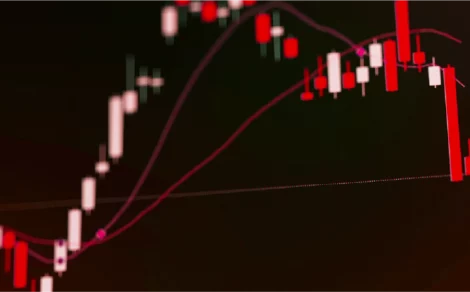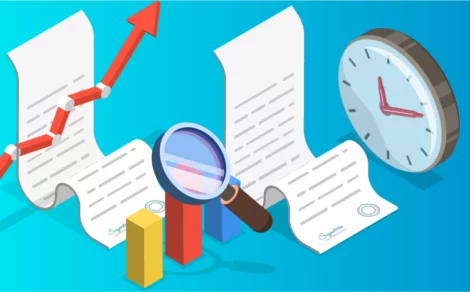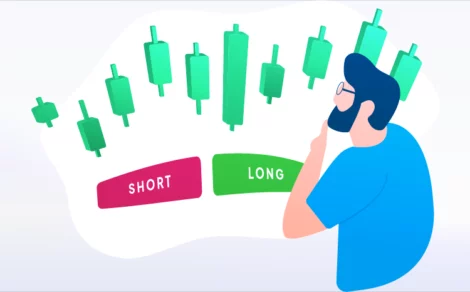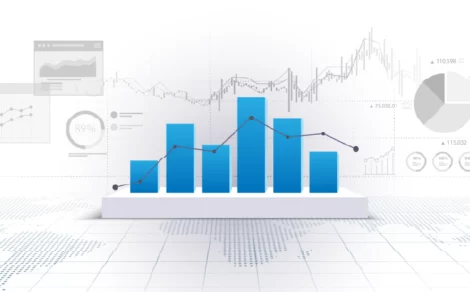Toruscope » Online Trading » How to Master Harmonic Patterns in Trading
Let’s be honest, most technical charts look like spaghetti when you’re just starting out. Lines crisscross everywhere. Patterns emerge, then vanish. It’s a mess.
But every now and then, some traders start drawing wings, claws, and M-shaped squiggles and say things like “It’s a bullish Gartley” or “That’s a textbook Bat pattern.”
You’re not alone if your first reaction is, what in the world are they talking about?
Welcome to the world of harmonic patterns, a little weird, definitely complex-looking, but surprisingly powerful once you get the hang of them. In this guide, we’ll break down what are trading harmonic patterns, how to read them, and why some traders swear by them like they’ve cracked the code.
Let’s dig in without turning it into a math class.
A Quick Origin Story: From Music to Markets
Yes, “harmonic” comes from harmony like music. The original idea behind harmonic patterns is that price movements in the market follow natural rhythms. Fibonacci ratios, the golden spiral… nature, basically.
Now don’t worry you don’t need to be a Fibonacci expert or a music major. You just need to spot shapes and understand the story behind them. Because trading harmonic patterns is really about patterns, symmetry, and timing.
What Are Trading Harmonic Patterns?
In plain terms? They’re specific, repeated shapes on the price chart that help predict future price moves. These shapes are built using key highs and lows, following strict Fibonacci ratios.
Think of them like the stock market’s version of weather patterns. You can’t control them but spotting one early might help you prepare for what’s coming next.
There are several harmonic patterns each with its own name, structure, and “personality.” Some of the most known ones are:
- Gartley Pattern
- Bat Pattern
- Butterfly Pattern
- Crab Pattern
- Shark Pattern
- Cypher Pattern
They all have funny names. But each one tells a story: a potential reversal point in price, often with very little drama or news behind it.
Why Do Traders Use Harmonic Patterns?
Great question. These aren’t the kind of things you’d find on Instagram trading reels. Harmonic patterns require patience and Discipline.
But there’s a reason some traders live and breathe this stuff:
- Precision: These patterns aren’t vague. They rely on clear ratios, which means less guesswork.
- Risk management: They naturally provide entry, stop loss, and target levels.
- Works in all markets: Stocks, forex, commodities even cryptos.
Once you know how to read these shapes, they become a quiet signal in the chaos. Especially when the stock market is doing its unpredictable dance.
Understanding the Commonly Known Harmonic Patterns
Here’s a human-friendly breakdown of a few popular patterns.
Gartley Pattern
This is the “starter pack” of harmonic patterns. Usually signals a reversal.
- Looks like a stretched-out M or W.
- Formed after a strong trend traders wait for it to complete and reverse.
- Uses Fibonacci ratios to define key turning points (like 61.8%, 78.6%, etc.)
Traders love this one because it often shows up before big swings in stocks in India, gold ETFs, or even a sudden reversal in top gold stocks.
Bat Pattern
Slightly different than Gartley, with a deeper B point (don’t worry, just a pivot level).
- It’s more conservative offers lower risk, smaller stop-loss.
- Still very effective in trending markets.
Let’s say you’re tracking a gold miner stock after a big move up. You see the bat pattern forming it might be your cue to wait for a retracement and get in at a better price.
Butterfly Pattern
No, it won’t make your profits fly, but it does signal a strong reversal.
- Unlike the Bat and Gartley, this one often goes beyond the initial trend point.
- Perfect for catching extreme tops or bottoms.
This pattern can show up right after heavy news events or earnings when gold production forecasts miss expectations, for example.
How Do You Actually Trade Using Harmonic Patterns?
Here’s the cool part: You don’t need to be a chart wizard. You just need to follow structure. Here’s a step-by-step guide:
- Spot the pattern forming usually with a tool or a trained eye.
- Measure the points (X, A, B, C, D). Many charting tools like Trading View offer harmonic pattern indicators.
- Wait for D-point to complete. That’s your potential reversal zone.
- Place your trade:
- Entry: Near point D
- Stop loss: Slightly beyond D (gives it room to breathe)
- Target: Usually A or B level (depends on your risk appetite)
It’s all about symmetry. When price completes the pattern, traders expect it to turn and plan accordingly.
How Does it Work?
Harmonic patterns don’t promise magic. But they can help you organize chaos.
They’re especially helpful when the market’s choppy like when streams and royalty stocks are reacting to commodity prices or hedge against inflation plays are confusing everyone.
Do they work 100% of the time? No.
But few tools in trading do. What harmonic patterns do well is offer structure, logic, and a visual map especially for traders who are more analytical.
Common Mistakes to Avoid
Let’s keep it real. Here’s where traders mess up with harmonic patterns:
- Forcing a pattern: Not every zigzag is a harmonic. Let it form naturally.
- Ignoring market context: Don’t trade patterns blindly. Combine them with support/resistance or news flow.
- Skipping the Fibonacci part: That’s like baking without measuring ingredients. It might work but probably won’t.
Do You Need Fancy Tools?
A basic charting tool (like Trading View or MetaTrader) plus a harmonic pattern indicator can get you started. Or, if you’re old-school, you can learn to draw them by hand. It actually helps you understand the structure better.
Final Thoughts: Patience, Not Prediction
Mastering harmonic patterns isn’t about calling tops and bottoms perfectly. It’s about recognizing structure, staying disciplined, and having a plan especially in a market where noise is everywhere.
So, if you’re wondering whether trading harmonic patterns are worth learning, yes, they are. But only if you’re ready to treat them like a craft. It’s a bit of art, a bit of math, and a whole lot of observation.
Whether you’re just starting out or aiming to optimise your strategy, Torus Digital’s Trading and Demat Account provide the speed, access, and technology you need to trade confidently with our Online Trading App. Start today!
Related Reads
What is Slippage in Trading? Meaning, Causes & Impact Explained
In trading, timing and precision often define success. However, even when a trader believes...
By: torus
- 7 mins
- 01.Jul.2025
- 4(1)
- 97
What is an Option Contract?
Imagine having the flexibility to buy or sell shares at a fixed price, no...
By: torus
- 7 mins
- 01.Jul.2025
- 0(0)
- 43
Types of Financial Instruments You Should Know Before Investing
Before investing funds in any market, it is essential to understand what financial instruments...
By: torus
- 7 mins
- 01.Jul.2025
- 0(0)
- 39
What are Contracts for Difference (CFD)?
Contracts for Difference, commonly known as CFDs, are financial instruments that allow traders to...
By: torus
- 9 mins
- 01.Jul.2025
- 0(0)
- 39
Difference between Short Position & Long Position
Understanding the concepts of short and long positions is essential for anyone interested in...
By: torus
- 8 mins
- 01.Jul.2025
- 0(0)
- 38
Essential Trading Terminologies You Need to Know
Trading in financial markets opens a world full of opportunities. For many first-time investors,...
By: torus
- 8 mins
- 01.Jul.2025
- 0(0)
- 47
Disclaimer: The content provided in this blog is for informational purposes only and does not constitute financial advice or recommendations. The content may be subject to change and revision. Readers are encouraged to conduct their own research and consult with a qualified financial advisor before making any investment decisions. Torus Digital and its affiliates takes no guarantees whatsoever as to its completeness, correctness or accuracy since these details may be acquired from third party and we will not be responsible for any direct or indirect losses or liabilities incurred from actions taken based on the information provided herein. For more details, please visit www.torusdigital.com.
Tenneco Clean Air IPO Listing: Strong Market Debut with 27% Premium
Tenneco Clean Air India Ltd made a confident entrance into the public markets on...
By: torus
- 5 mins
- 19.Nov.2025
-
3.7(6)
-
306
Stock to Buy Today: November 19, 2025
The Indian stock market witnessed a mild decline on November 18, 2025, ending a...
By: torus
- 4 mins
- 19.Nov.2025
-
4.3(3)
-
306
Mirae Asset Infrastructure Fund NFO: A Sector-Focused Bet on India’s Growth
Mirae Asset Mutual Fund has launched a new equity scheme — Mirae Asset Infrastructure...
By: torus
- 4 mins
- 18.Nov.2025
-
4.3(6)
-
306
Emmvee Photovoltaic IPO: Shares Make Muted Market Debut, List Flat At ₹217
Emmvee Photovoltaic Power made a muted debut on 18 November 2025, listing flat at...
By: torus
- 3 mins
- 18.Nov.2025
-
3.7(6)
-
306








